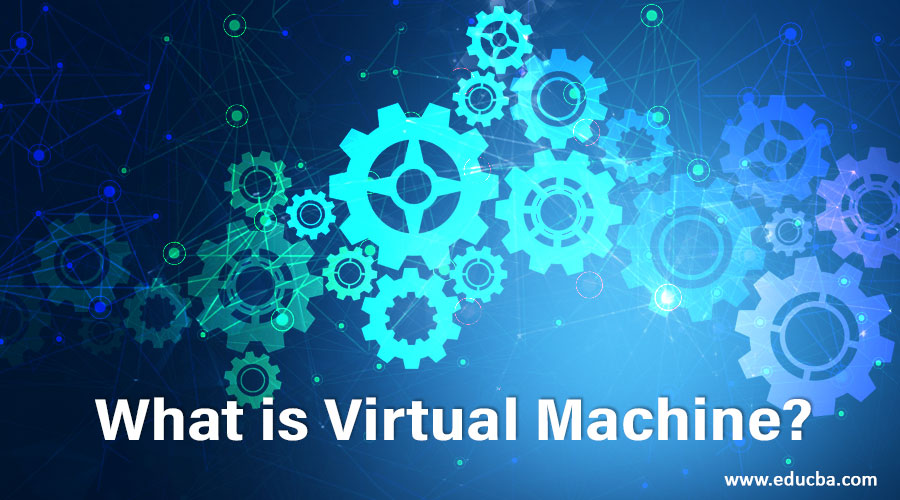Updated March 21, 2023
Introduction to Virtual Machine
Virtual Machine is defined as software of a computer which provides functionality similar to the physical computers i.e. they run operating system and applications on top of it but they differ from the physical computer and the fact that they are computer files, known as an image which runs on top of physical computers using the hypervisor, due to this the user has the liberty of running multiple operating systems on top of the main operating system without the need of buying additional physical resource.
What is Virtual Machine?
A virtual machine is a computer file, usually known as an image that acts like a real computer. This means that a computer is created inside a computer. It works in a window, like any program, providing the end-user with the same virtual system experience on the host operating system. From the rest of the system, it is sandboxed, so the program can not escape from or tamper with the device itself within the virtual machine.
This creates the ideal environment to test operating systems other than access virus-infected data, beta releases, or run operating systems software, or create operating system backups, apps for which they have not been originally designed. Many virtual machines can run on the same physical computer simultaneously. For servers, several operating systems run side-by-side with the software known to be managed as a hypervisor, whereas desktop computers normally run other operating systems in their program windows by using one operating system.
Each virtual machine has its own virtually exclusive hardware including hard drives, CPUs, network interfaces memory, and other hardware. The virtual hardware is then mapped to the actual hardware on the physical computer, which decreases cost and related maintenance costs by reducing the need for physical hardware systems as well as power and replacing demand.
How Does Virtual Machine Work?
Virtualization technology can share a network with a large number of virtual environments. The hypervisor controls and removes the hardware from the virtual environment. Assets are segregated from the physical surroundings to the virtual machine as appropriate. If a VM is running, the hypervisor programmed the resource request for the physical system so that the operating system and applications of the virtual environment can have access to the combined pool of physical resources, which requires additional resources from the physical environment. There are types of hypervisors.
1. Type 1
A hypervisor type 1 is built on bare metal. VM resources are directed by the hypervisor to the hardware. KVM is a hypervisor type 1 example. KVM has been merged into Linux ® in 2007, so you already have access to KVM if you are using a modern Linux version.
2. Type 2
Hosted is type 2 of the hypervisor. VM resources are programmed against a host operating system and run against the hardware. Examples of Type 2 hypervisors include VMware Workstation and Oracle Virtual Box. Once we know this, when opening a virtual machine, such as Virtual Box, we have an environment in which we can configure and resource each physical component that is emulated by it.
- Space we want our hard drive to assign.
- RAM memory we want the virtual machine to allocate.
- The network settings we want.
We have created a virtual machine for installing a working system after configuring the parameters. This means we only have to open and install it, which has just been created as if it was a normal computer.
Why Should we Use Virtual Machines?
The consolidation of servers is a major reason for using VMs. Many operating systems and device implementations use a small number of the available physical resources to bare metal. You can place many virtual servers on each physical server by virtualizing your servers to improve hardware usage. You don’t need to buy additional physical resources and minimize the need for power, space, and cooling in the data center.
VMs allow failover and redundancy which can only be done previously by additional hardware. A VM offers an environment isolated from the rest of a device and so anything running on the host hardware will not interfere. Since VMs are isolated, they are a good way to test or build a development environment for new applications. Even, to support a specific process, you can run a single VM.
Advantages and Disadvantages
Given below are the advantages and disadvantages mentioned:
Advantages:
- Provides solutions for disaster recovery and implementation.
- Digital computers are managed, maintained, and accessible in general.
- A single physical computer can run multiple operating system environments.
Disadvantages:
- Running more than one virtual machine can lead to an unstable output.
- It is less efficient and slow running than a physical machine.
Recommended Articles
This is a guide to What is Virtual Machine? Here we discuss the introduction and how virtual machines works along with advantages and disadvantages. You can also look at the following articles to learn more –




